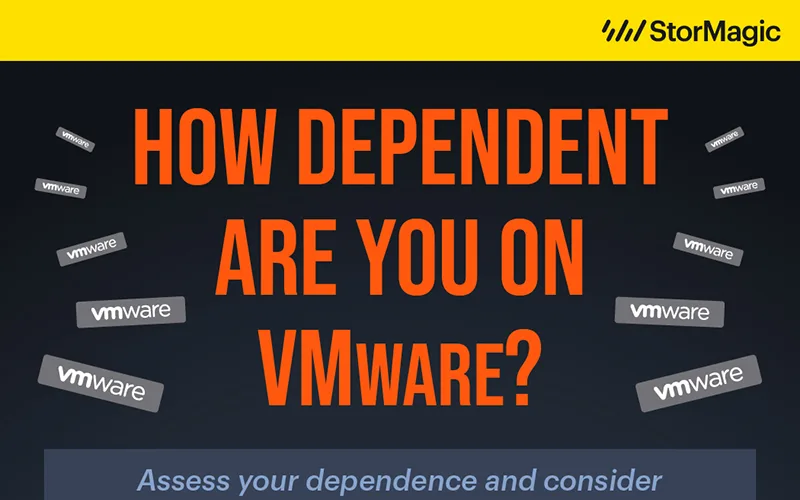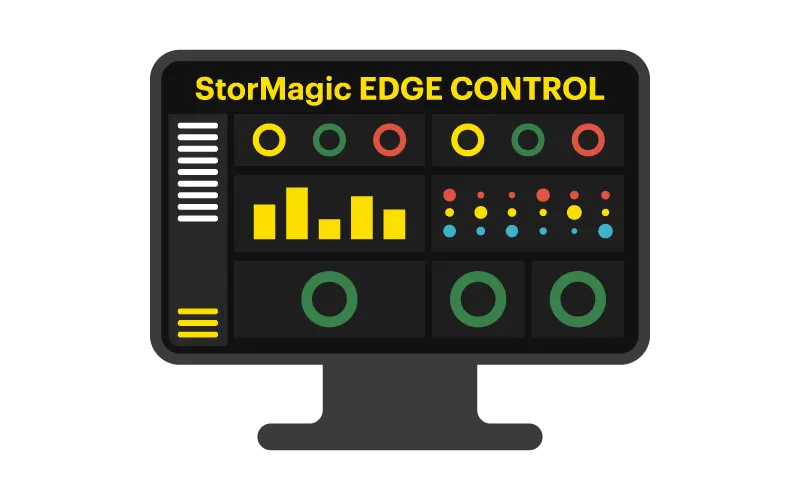As manufacturers modernize their operations, it is crucial that they find new ways to address the unique and ever-present challenges of running at the edge. The rapid development of Industry 4.0 and the Internet of Things (IoT), which requires high levels of reliability, performance, and cost efficiency, has led to edge computing in manufacturing growing in importance over the past decade.
The edge computing market is expected to register a CAGR of 44.9% between 2022 and 2027, with manufacturers and companies adopting IoT and 5G operations believed to be driving this market growth1. And just like with so many other organizations, manufacturers are being hit invariably with a number of edge-specific issues, including downtime, complex architecture, and the need to maintain high levels of availability and reliability to collect and process the vast amounts of data produced at these sites.
The Gartner® Magic Quadrant™ for Global Industrial IoT Platforms provides up-to-the-minute commentary on the sector, the vendors within it, and how each vendor’s offerings address the challenges manufacturers face with implementing IIoT. Download the report here.
Edge computing challenges in manufacturing
Increase in data: More devices, more machinery, more sensors, more data
 Continual advancements in technology mean manufacturers are seeing even greater numbers of robots, machinery and IoT sensors and devices on factory floors today. Though these advancements provide many benefits, including increased efficiency and speed in production, they also create more and more data to store, secure and process at these sites. IT infrastructure needs to be architected in the most cost-effective, efficient and scalable manner to deliver the performance necessary for millisecond application decision-making, as well as the capacity to store critical data close to the source.
Continual advancements in technology mean manufacturers are seeing even greater numbers of robots, machinery and IoT sensors and devices on factory floors today. Though these advancements provide many benefits, including increased efficiency and speed in production, they also create more and more data to store, secure and process at these sites. IT infrastructure needs to be architected in the most cost-effective, efficient and scalable manner to deliver the performance necessary for millisecond application decision-making, as well as the capacity to store critical data close to the source.
One such example is the use of ERP systems in manufacturing. However, ERP is notorious for its complexity, requiring manufacturers to carry out careful planning of the manual processes they need to automate, testing to check the system is working correctly, and continued maintenance to ensure it’s effectively managing business units, locations, and jurisdictions. In order to get the most out of this technology, manufacturers must leverage solutions that ensure the high availability of this business-critical application 100% of the time.
Downtime: Production lines cannot be disrupted
 Downtime is possibly the single largest issue facing manufacturers today. When IT systems go down, production lines grind to a halt and lost revenue begins to add up. Anything that is part of the system will be impacted – from databases and ERP systems to production applications and IoT sensors and endpoints. Physical SANs are a common single point of failure, causing delays and reliability issues. And as is common with factory floors which are typical edge computing environments, there are few if any onsite IT personnel to perform fixes. Consequently, manufacturers must place great importance on maintaining uptime with highly available IT systems that can tolerate failures and eliminate single points of failure.
Downtime is possibly the single largest issue facing manufacturers today. When IT systems go down, production lines grind to a halt and lost revenue begins to add up. Anything that is part of the system will be impacted – from databases and ERP systems to production applications and IoT sensors and endpoints. Physical SANs are a common single point of failure, causing delays and reliability issues. And as is common with factory floors which are typical edge computing environments, there are few if any onsite IT personnel to perform fixes. Consequently, manufacturers must place great importance on maintaining uptime with highly available IT systems that can tolerate failures and eliminate single points of failure.
Inefficiencies: Keeping pace with rapidly evolving technologies
 Aging servers, machinery, and other outdated infrastructure often come with rising maintenance costs and compatibility issues. This introduces a high degree of inefficiency into production lines, resulting in workarounds and compromises that hit productivity. Replacing machinery and software is complex and expensive, and often out of reach of manufacturing organizations with tight budgets. As a result, manufacturers at the network edge should consider optimizing infrastructure in a cost-effective manner that minimizes spend and the need for additional manpower.
Aging servers, machinery, and other outdated infrastructure often come with rising maintenance costs and compatibility issues. This introduces a high degree of inefficiency into production lines, resulting in workarounds and compromises that hit productivity. Replacing machinery and software is complex and expensive, and often out of reach of manufacturing organizations with tight budgets. As a result, manufacturers at the network edge should consider optimizing infrastructure in a cost-effective manner that minimizes spend and the need for additional manpower.
Edge computing use cases in manufacturing
Faced with these challenges, operating at the edge can be tough for manufacturers across the globe. Here are three examples of how organizations have overcome the challenges of their edge computing manufacturing use cases:
Eugen Forschner
Faced with moving construction, production, office, CRM, and SQL data from their physical HPE MSA SAN based in the Czech Republic, Eugen Forschner was in need of a solution that was easy and quick to use and install. As their operations ran 24×7, they also required it to have at least 99% uptime.
After selecting and installing StorMagic SvSAN, the manufacturer experienced a quick installation with minimal disruption during the process, 100% uptime for their enterprise apps, and a seamless transfer of their business data to the platform. Additionally, they were able to continue to use their preferred storage type, all-flash on commodity servers, and benefit from centralized management and an unlimited terabyte license, allowing their investment to grow with them.
CEA SpA
Wishing to reduce costs and remove single points of failure to ensure the reliability of their systems for real-time monitoring, decision-making support, and alerts during emergencies, CEA SpA was in need of an update from their old SAN. Connected through a fiber channel to a split virtualized infrastructure in two separate rooms over a LAN, it was leaving them at risk of unplanned downtime. Both VMware vSAN and StorMagic SvSAN were shortlisted as options to consider, with SvSAN being selected after successful testing and a competitive price point.
CAE’s new SvSAN cluster was deployed and fully operational in less than two hours, allowing the company to remotely manage its entire system with greater ease and speed than their original physical SAN cluster.
They’ve also saved space, time, and money, completely eliminating the four racks they used for storage, reducing their power supply requirements by at least two kilowatts, and experiencing significantly faster shutdown and startup times – at least ten minutes faster.
Rommelsbacher
In need of a hyperconverged solution that ensured maximum uptime and high availability in its datacenter, Rommelsbacher was searching for alternative solutions to complement its physical SAN. The company was aware of the challenges that can be introduced when migrating existing environments, so was keen on finding a solution that was low in risk, eliminated single points of failure, and provided them with high availability and minimal disruption.
Using StorMagic SvSAN, Rommelsbacher ensured 100% uptime for their storage and experienced dramatically improved performance rates using just two servers. They now benefit from highly available configurations and synchronous mirroring, allowing them to effectively eliminate all single points of failure and improve ERP system and production application uptime.
Choose StorMagic SvSAN for manufacturing use cases
StorMagic SvSAN is a lightweight, virtual SAN that is well-suited to the specific needs of manufacturing sites at the edge, ensuring 100% uptime on factory floors. Extremely affordable, SvSAN users can save as much as 33% compared to other similar solutions, by requiring only two nodes per highly available cluster, instead of three, while even more can be saved when using existing or refurbished hardware. And with the ability to be used on any x86 servers, and any hypervisor, it’s flexible too.
With its remote witness, SvSAN provides a simple, robust, and reliable way to ensure the high availability of business-critical apps, databases, ERP and production applications, and IoT systems, giving manufacturing organizations a hassle-free way to manage every factory and facility from a single location and single pane of glass.
For more information about utilizing StorMagic SvSAN in a manufacturing setting, explore our manufacturing resource hub, containing case studies, infographics, videos and supporting documentation.




